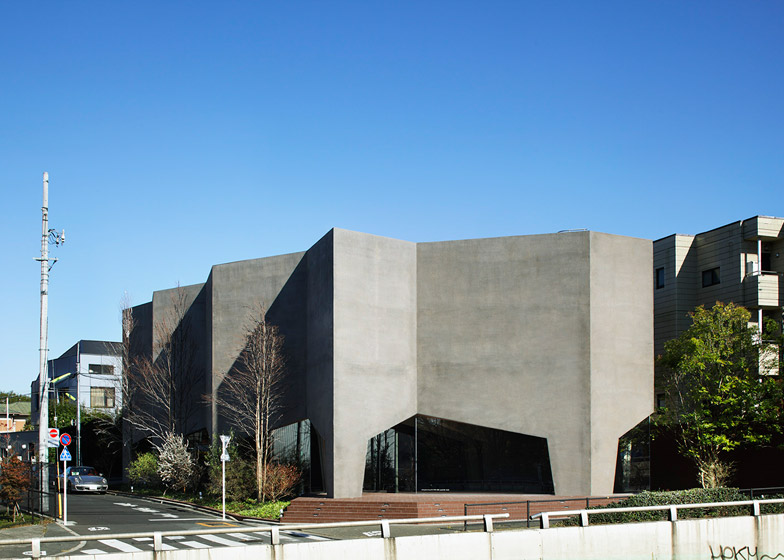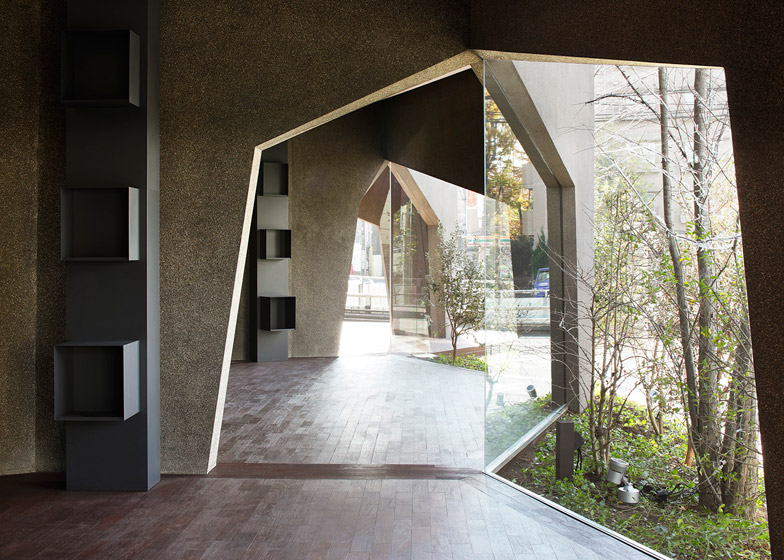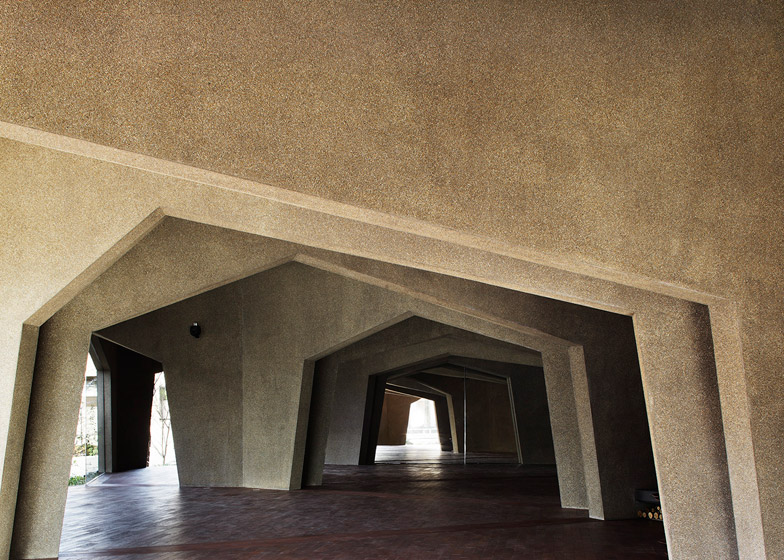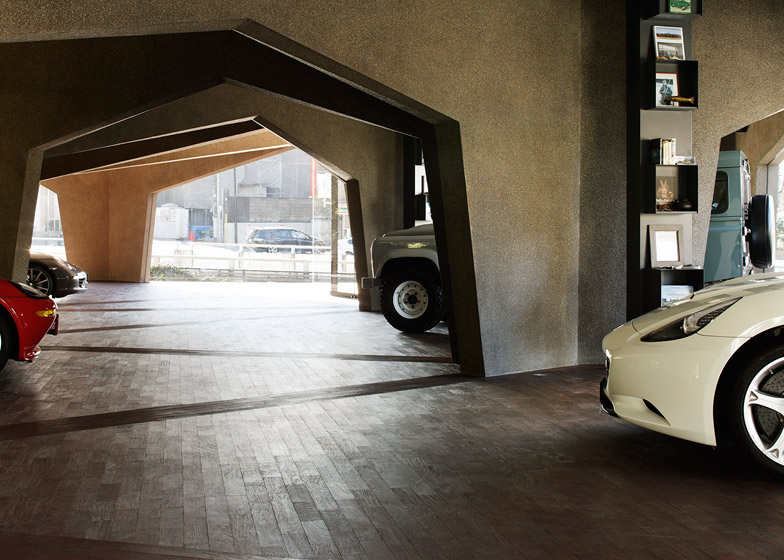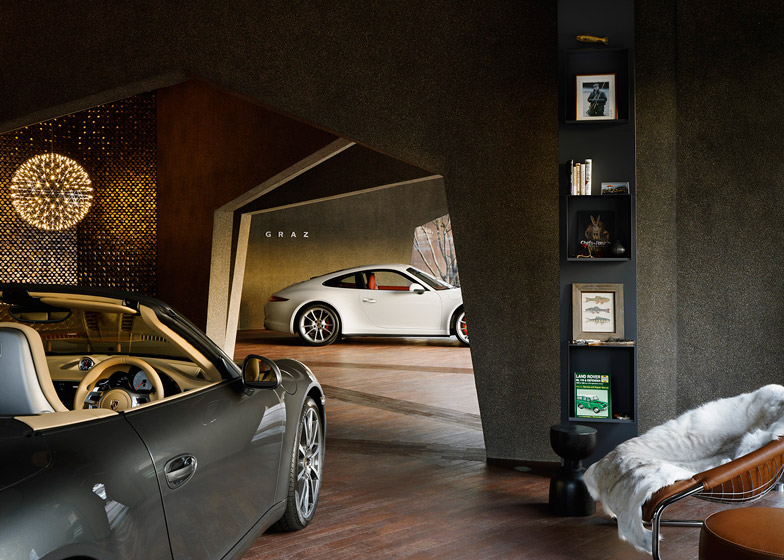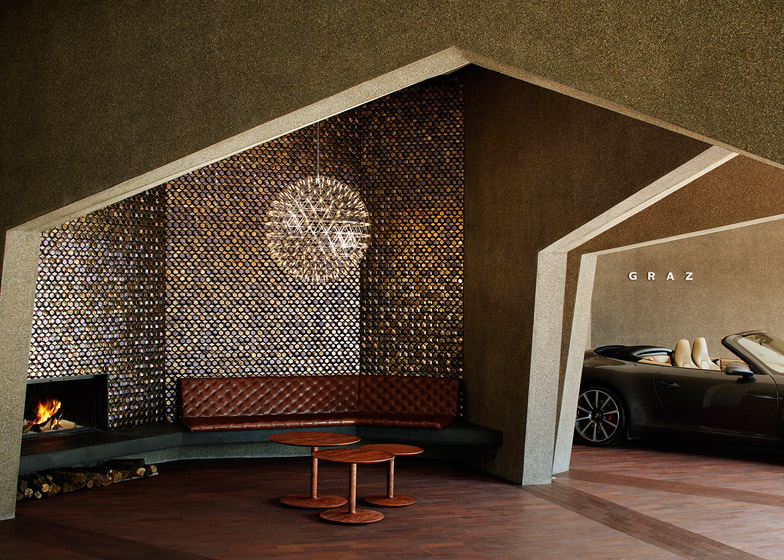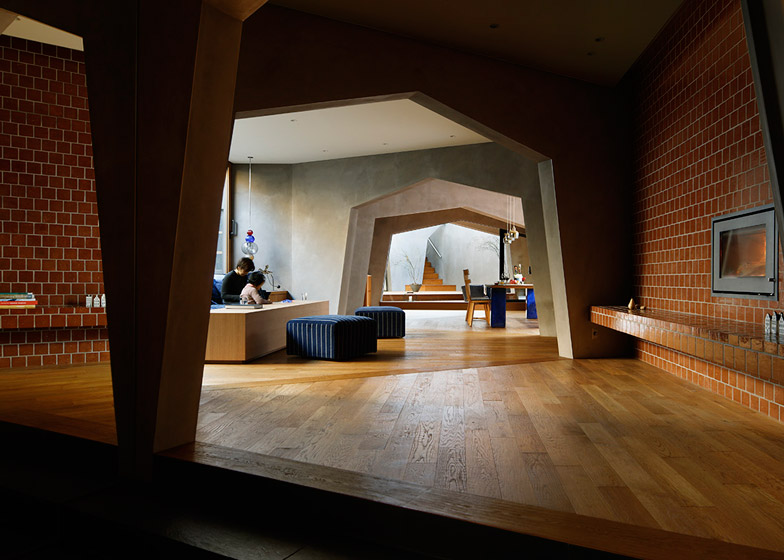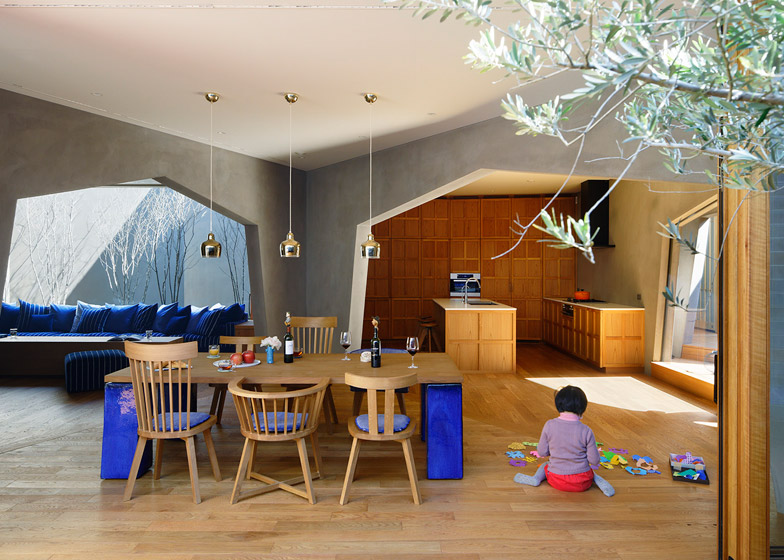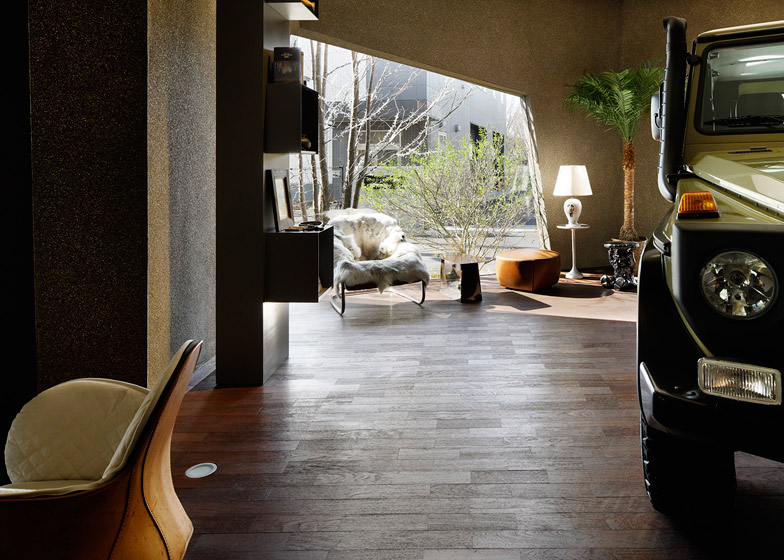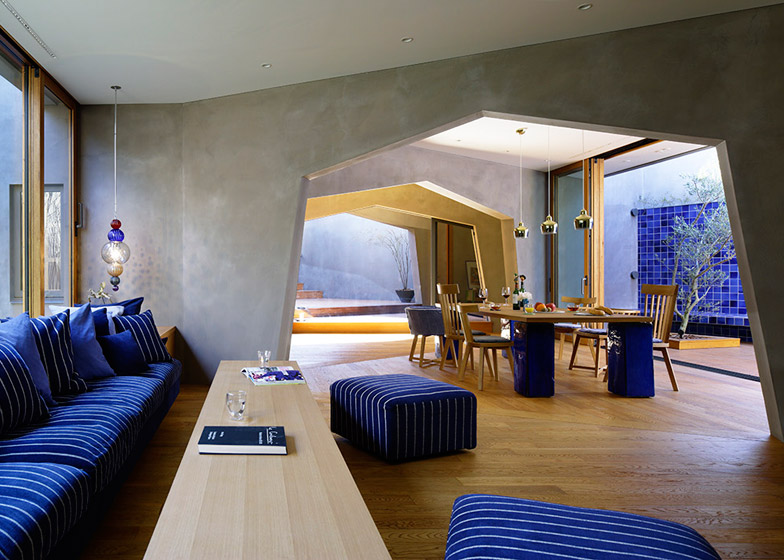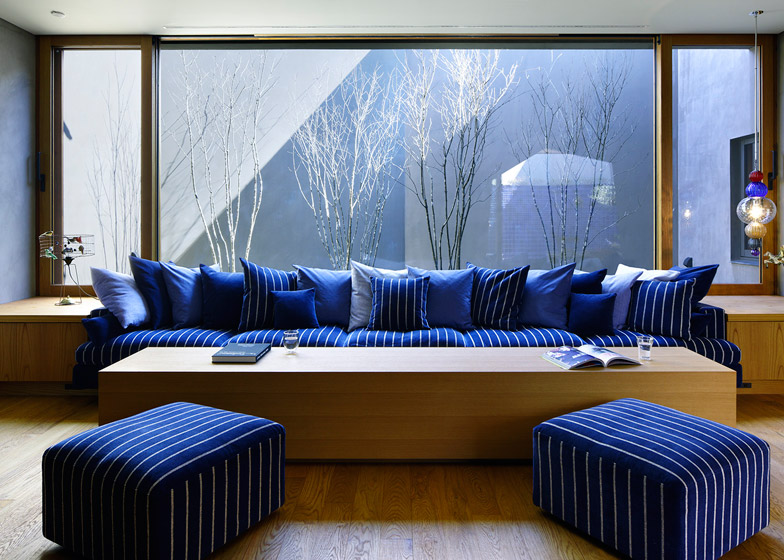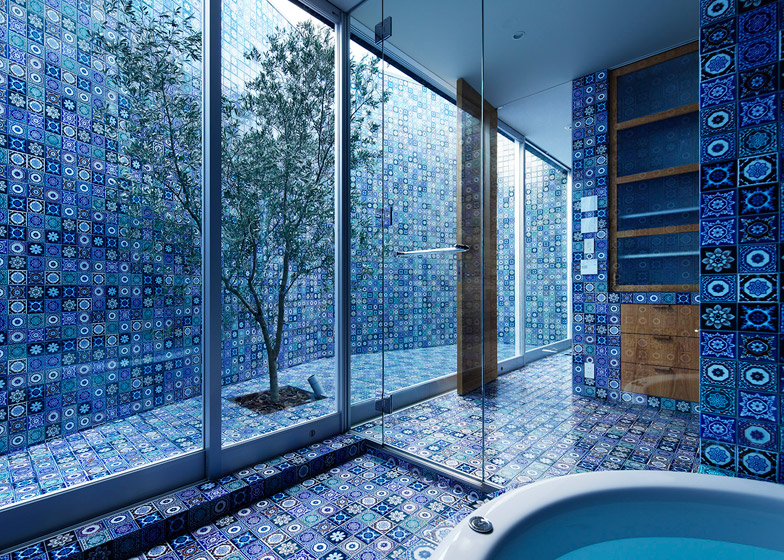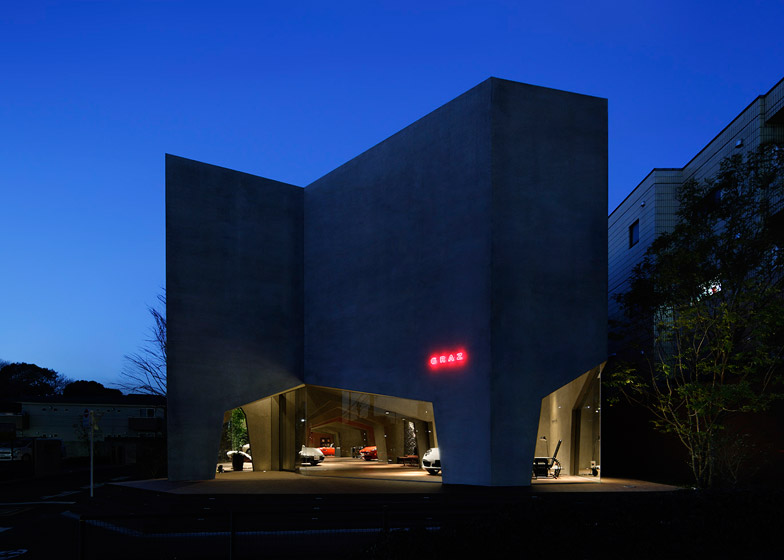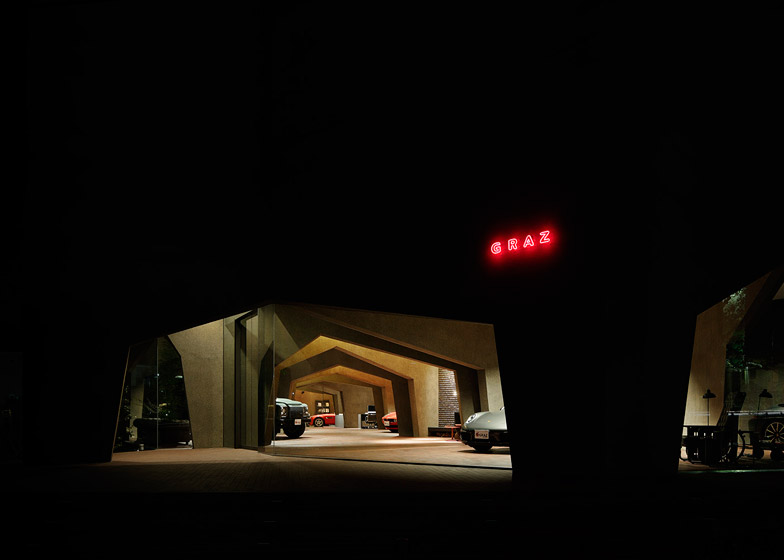Japanese architect Hiroshi Nakamura used hexagons to generate the layout of this Tokyo home and workplace for a car dealer, while triangular arches create warren-like interiors (+ slideshow).
Nakamura and his Tokyo studio NAP designed the live-work building for the Setagaya ward of Tokyo. One floor contains the client's family residence, while the other accommodates his showroom and office.
"The client sought a large space for displaying cars downstairs and a similar large space for collective family living upstairs," explained Nakamura, who worked in Kengo Kuma's office before setting up his studio in 2002.
Built from reinforced concrete, the building comprises two open-plan floors. Both of these spaces are divided up by triangular-arched openings, creating a honeycomb-like network of six-sided spaces.
This arrangement satisfied the client's need for a large, flexible space for the business, but also created domestic-scale living areas.
"If only large, the spaces would not be suitably comfortable," said the architect. "So we therefore clustered personal spaces – the optimal size for a car on the first floor and for a sofa or table on the second floor — and produced two large personalised yet integral spaces."
"We chose a hexagon for the shape of the rooms," he added. "By sharing party walls, the hexagonal rooms enhance the building's strength and improve its economic efficiency."
In the showroom, named Graz, these hexagonal segments provide parking bays for cars that vary from convertibles to four-by-fours. There is also a client lounge and a meeting room.
Small pebbles set into the concrete walls of the showroom create texture. The architect paired the two materials together to combine both the hard lines of a typical car showroom with the more tactile environment of a home.
"The typical car showroom employs smooth stone or metal panels in seeking a harmony with the cars," said Nakamura.
"Such an approach, however, detracted from the comfort of the space. If an earthen or wood finish were employed, on the other hand, the harmony with the metal and glass car body would be lost."
"We found we could harmonise the architectural space with the metallic car by minutely adjusting the visual hardness of the materials used," he continued. "Mixing in Sakura River pebbles, we obtained an intermediate half-stone, half-earth finish."
In addition to the large internal openings, expanses of glazing around the perimeter of the space offers views out to the surrounding gardens.
Both internal and external openings also align to create a lane down the centre of each floor. At ground level this provides an access route for cars, while on the upper floor it forms a corridor linking the family's living spaces.
A flight of external stairs provides direct access to the family home. Here, the hexagonal spaces define the boundaries of a kitchen, lounge, dining room and study, as well as the timber-lined lobby.
Different materials have been used to help give each space its own character; red brick lines the walls of the lounge, while intricately patterned blue and white tiles cover the bathroom and its adjoining terrace.
On both floors, timber floorboards are made from the wood of Asian quince trees.
Garden terraces set at the outer edge of each of the primary living spaces provide a buffer from the noise of the adjacent street, as well as providing natural light and ventilation.
Nakamura completed Graz in 2012. More recent projects by his studio include Ribbon Chapel, a wedding venue wrapped by a pair of spiralling staircases, and Nasu Tepee, a woodland retreat resembling a group of tents.
Photography is by Koji Fujii/Nacasa and Partners.
Project credits:
Architecture: Hiroshi Nakamura & NAP
Structure design: Yasushi Moribe
Lighting: Shinji Yamaguchi/On & Off
Pendant Light: Yudai Tachikawa/t.c.k.w
Books and accessories selection: Toshie Tanaka

